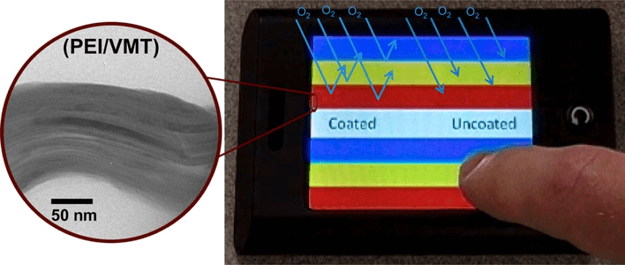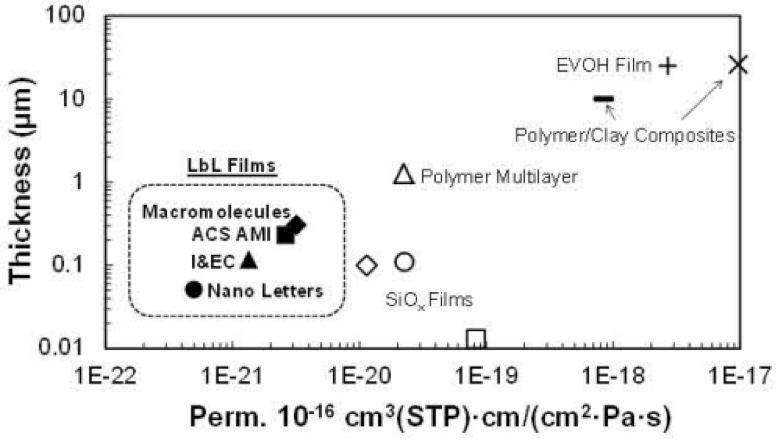It is nearly impossible to incorporate more than a few weight percent of clay into traditional bulk composites. Depositing clay in a layer-by-layer fashion creates thin films that are fully dense, completely transparent (shown on an actual device in the image below), and contain as much as 96 wt. % of completely exfoliated clay (ACS Applied Materials & Interfaces 2012).
These “nano brick wall” films act as impressive gas barriers, with many thin films yielding oxygen transmission rates (OTR) below 0.005 cm3/(m2 Pa day) (0%RH, 23°C). A 51 nm thick, 4-quadlayer film of polyethylenimine (PEI), poly(acrylic acid) (PAA), PEI, and montmorrilonite clay (MMT) on 7-mil PET exhibits the lowest permeability ever reported for any thin film material (≤ 5 x 10-22 cm3(STP)cm/(cm2 s Pa), Nano Letters 2010). Moreover, all-polymer 10-bilayer films of PEI and PAA maintain an OTR below 0.005 cm3/(m2 day) at 100% RH (Macromolecules 2011). These films can be quickly deposited via spray coating, making this an easily scalable process (Industrial & Engineering Chemistry Research 2015). Transparency can be maintained with increased barrier properties on relatively thin polymer substrates, such as oriented polypropylene, that are difficult to apply coatings too and are too thin to include filler (Macromolecular Rapid Communications 2016).
Coupling high barrier with flexibility and transparency, these nanostructured thin films rival that of existing barrier materials (shown in the graph below) and are useful for a variety of packaging applications (e.g., flexible electronics, food and medical). We are always looking for collaborators as we continue to improve these systems and tailor them for specific substrates and applications.


